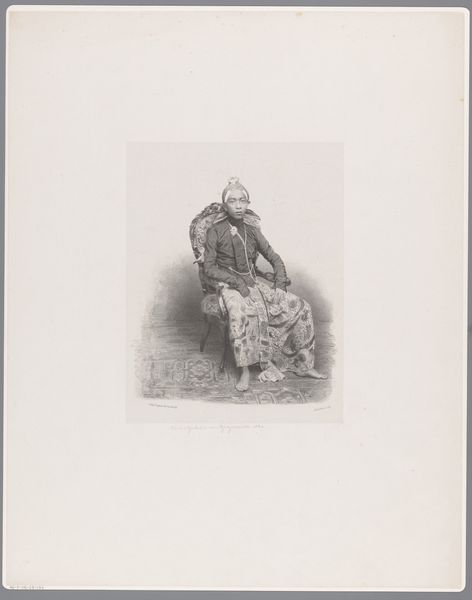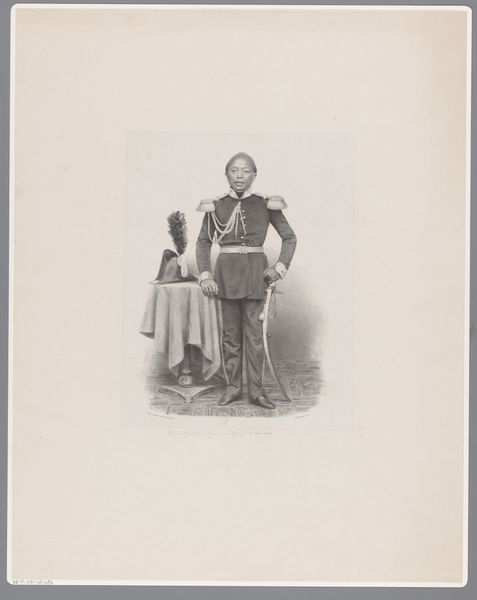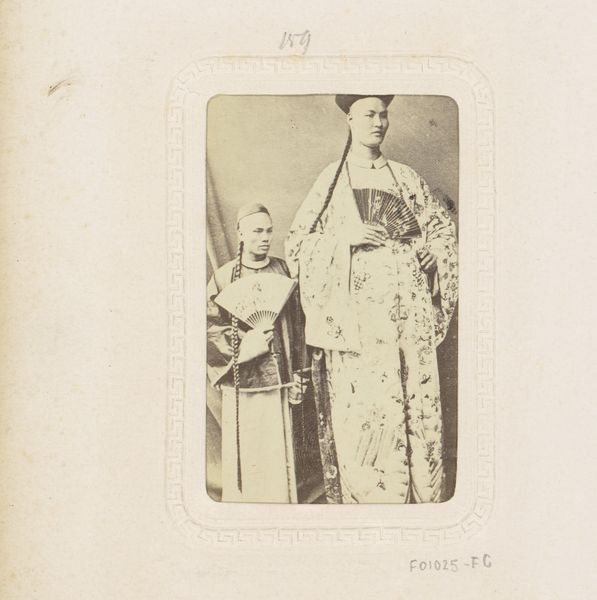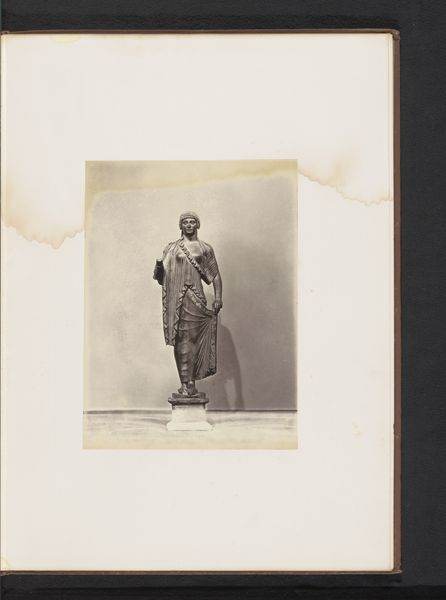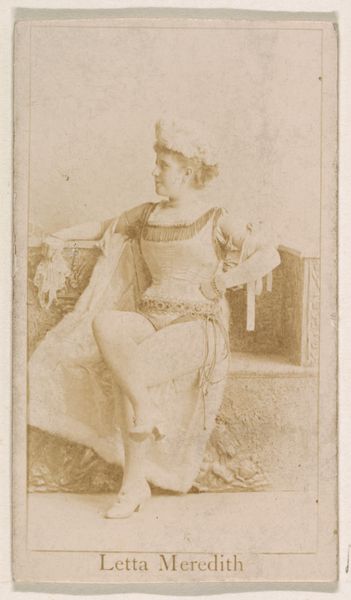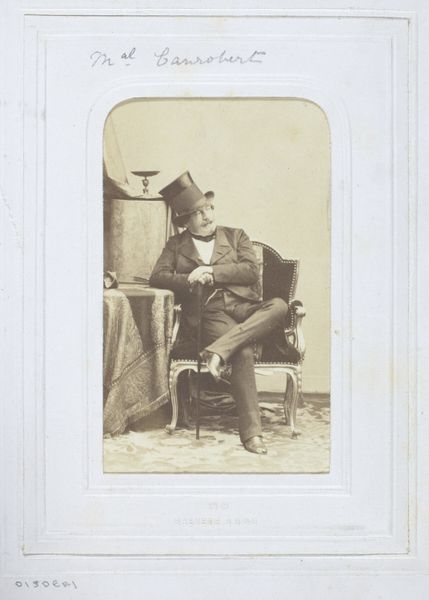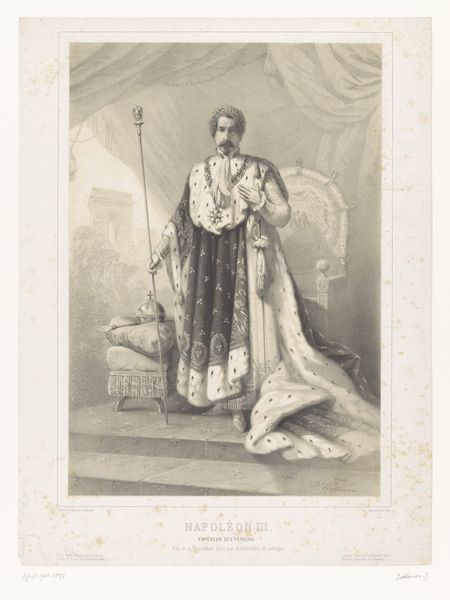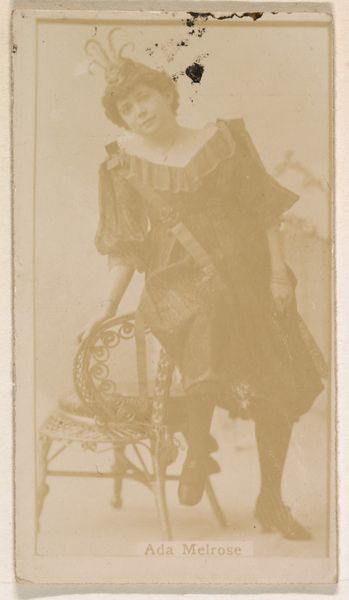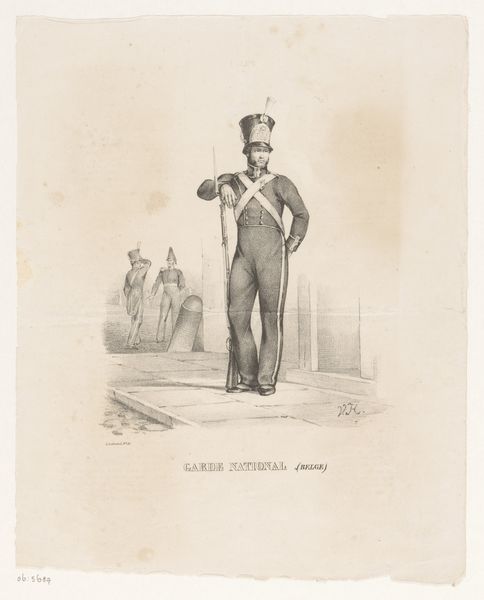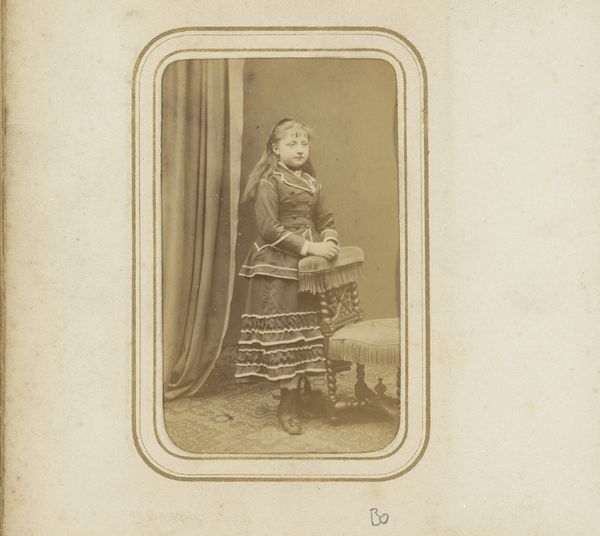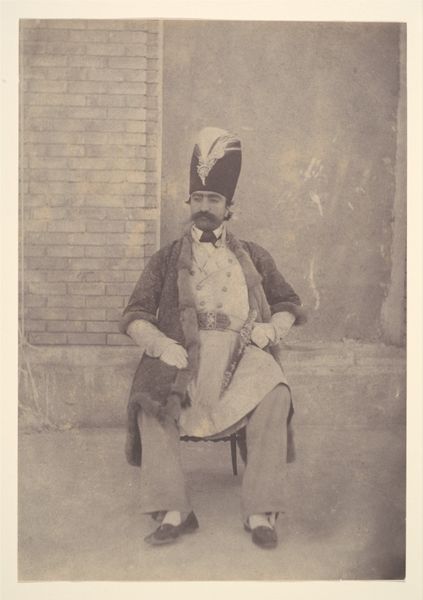
Portret van Hamangkoe Boewono VI, sultan van Jogyakarta c. 1851 - 1883
0:00
0:00
daguerreotype, photography
#
portrait
#
daguerreotype
#
photography
#
historical photography
#
historical fashion
#
orientalism
#
history-painting
#
academic-art
Dimensions: height 555 mm, width 440 mm
Copyright: Rijks Museum: Open Domain
Editor: This is a portrait of Hamangkoe Boewono VI, Sultan of Yogyakarta, created sometime between 1851 and 1883, by Johan Hendrik Hoffmeister, using the daguerreotype process. It has such a stately presence. What symbolic significance can we unpack from this regal depiction? Curator: The symbols here speak volumes about power, cultural exchange, and perhaps even the tension inherent in colonial relationships. Look at his clothing: the blend of indigenous fabrics and what appear to be Western-influenced tailoring. What does that suggest to you about cultural adaptation and resistance? Editor: It's like he's walking a tightrope, honoring tradition while also acknowledging external influences. The star-shaped broach almost feels like a Western medal, positioned next to traditional Javanese clothing. Curator: Precisely. The accoutrements – the kris dagger barely visible behind him, the elevated footrest, the objects on the side table - what stories do these objects tell of his cultural identity, his power? Editor: I suppose the objects, each carefully placed, construct this persona. A lot is unreadable for those unfamiliar with the cultural language of Java, then and now. Is this intentional on the photographer’s part, or purely a Western gaze shaping how the Sultan is being presented to a European audience? Curator: It’s impossible to disentangle those threads entirely. This portrait freezes a moment laden with complex histories. Considering it was made during a period of Dutch colonial rule, how might the artist, whether intentionally or not, be reflecting or even subtly challenging that power dynamic through the composition or his portrayal of the Sultan? What kind of story would it tell from an indigenous perspective, I wonder? Editor: I never thought about the colonial undertones within what seemed like just a traditional portrait. Thank you! Curator: And I am left wondering about the silences inherent in these depictions of power. A powerful visual, leaving us with more questions than answers perhaps.
Comments
No comments
Be the first to comment and join the conversation on the ultimate creative platform.
